Search Result
Results for "
Fluorescence assay
" in MedChemExpress (MCE) Product Catalog:
2
Biochemical Assay Reagents
| Cat. No. |
Product Name |
Target |
Research Areas |
Chemical Structure |
-
- HY-130433
-
|
|
Fluorescent Dye
|
Others
|
|
NBD Sphingosine (NBD-Sph), a fluorochrome, is a fluorescence-labeled sphingosine. NBD Sphingosine can be uesd for fluorescence assay for sphingosine kinases .
|
-
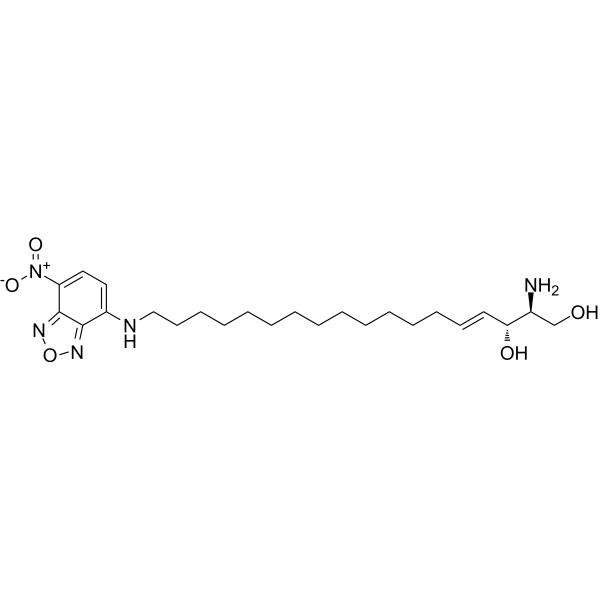
-
- HY-133705
-
|
|
HSP
|
Others
|
|
Geldanamycin-FITC, a Geldanamycin fluorescent probe, can be used in a fluorescence polarization assay for HSP90 inhibitors. Geldanamycin-FITC also can be used for detection of cell surface HSP90 .
|
-

-
- HY-D1678
-
|
|
Fluorescent Dye
|
Others
|
|
5(6)-Carboxynaphthofluorescein diacetate is a fluorescent substrate for esterase assays that can be cleaved by intracellular esterases, producing red fluorescence to measure enzyme activity (Ex = 590 nm; Em = 645 nm) .
|
-
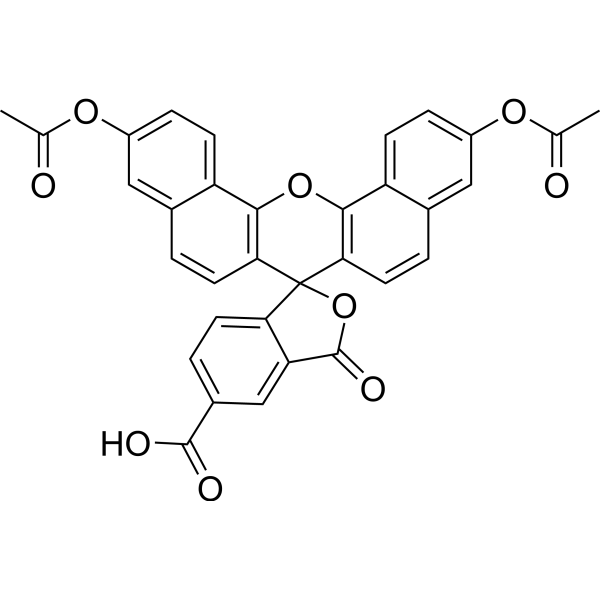
-
- HY-D1654
-
|
|
Fluorescent Dye
|
Others
|
|
BDP 581/591 maleimide is a linker of the BDP 581/591 dye. It has a long fluorescence lifetime and can be used for fluorescence polarization assays. The maleimide group can react with thiol groups to form thioester bonds between pH 6.5 to 7.5, for the labeling of sulfhydryl groups of proteins and peptides.
|
-
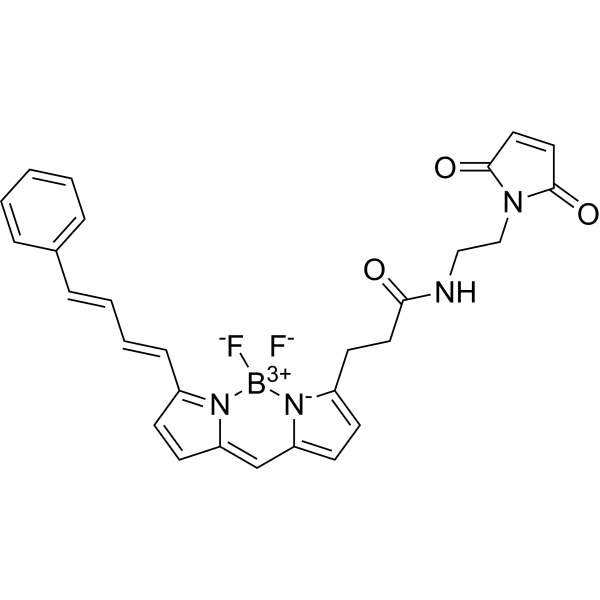
-
- HY-151775
-
|
|
Fluorescent Dye
|
Others
|
|
BDP TR azide is a click chemistry reagent containing an azide group that can react with alkynes, DBCO and BCN. BDP TR azide is also a fluorescent dye that can be used in fluorescence polarization assays and microscopy.
|
-
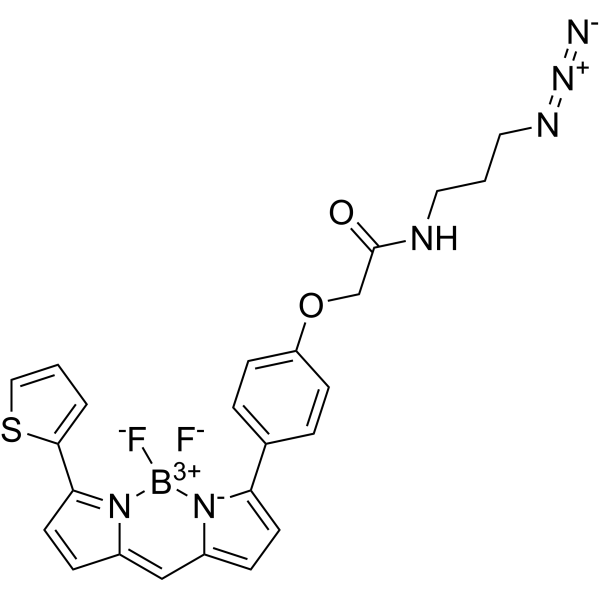
-
- HY-12791
-
-
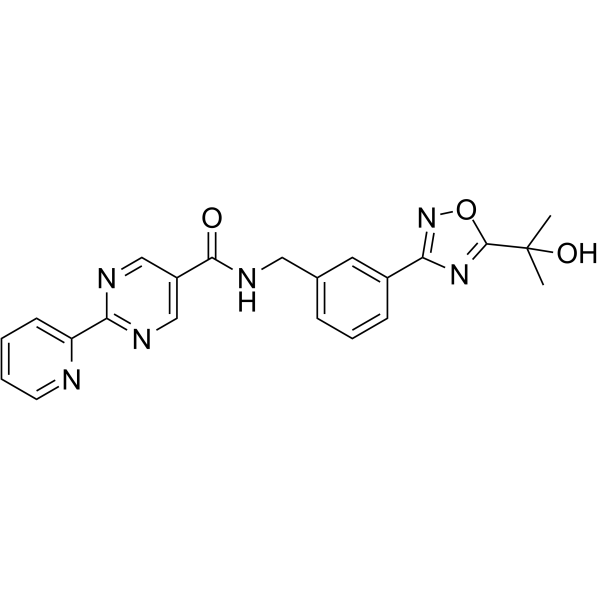
-
- HY-18717
-
|
|
Isocitrate Dehydrogenase (IDH)
|
Cancer
|
|
Mutant IDH1-IN-2 is a inhibitor of mutant Isocitrate dehydrogenase (IDH) proteins, with IC50 of in LS-MS biochemical assay, IC50 of 16.6 nM in Fluorescence biochemical assay.
|
-
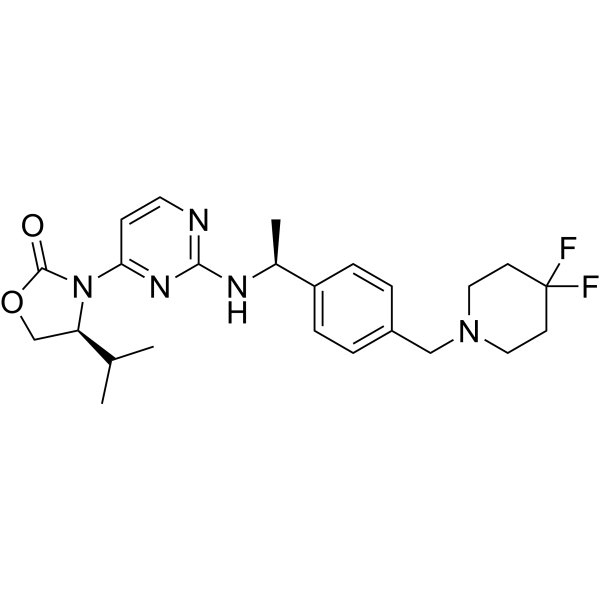
-
- HY-D0038
-
|
|
Fluorescent Dye
|
Inflammation/Immunology
|
|
BTBCT is mainly used as a label in time-resolved fluorescence immunoassays (TRFIA). The lower limit of detection for TSH TR-IFMA is 0.011 mIU/L in a 10 μl sample volume. The high fluorescence intensity and stability of BTBCT improves the sensitivity of the assay .
|
-

-
- HY-131009
-
|
|
PARP
|
Others
|
|
Fluorescein-NAD+ is an alternative to radiolabeled NAD and a substrate for ADP-ribosylation. Fluorescein-NAD+ can be used in PARP assays by fluorescence microscopy. Extinction Coefficient: 262 nm.
|
-
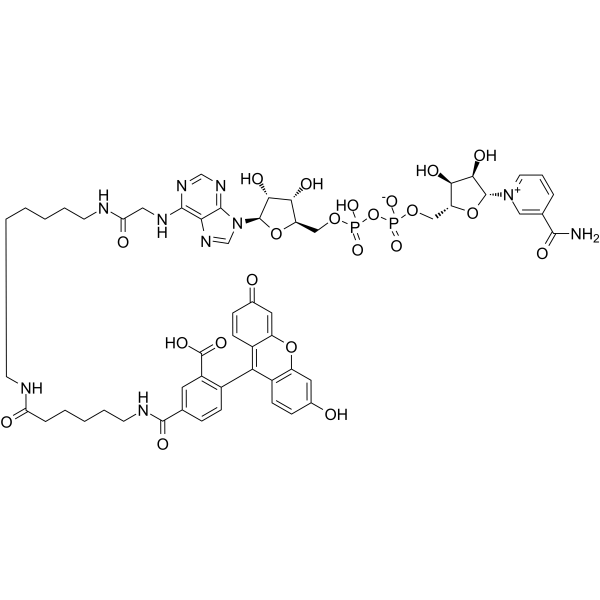
-
- HY-101027
-
|
|
|
|
|
GSK 4027 is a chemical probe for the PCAF/GCN5 bromodomain with an pIC50 of 7.4±0.11 for PCAF in a time-resolved fluorescence resonance energy transfer (TR-FRET) assay.
|
-
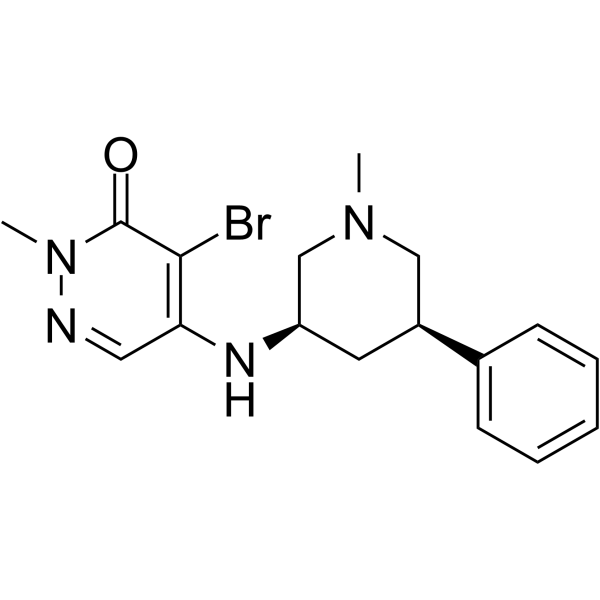
-
- HY-117468
-
|
|
Fluorescent Dye
|
Others
|
|
Lissamine rhodamine B is a red-fluorescent dye, it is a derivative of rhodamine. Lissamine rhodamine B can be used as a fluorescent probe to develop competitive aptamer fluorescence anisotropy/polarization (FA/FP) assays .
|
-

-
- HY-134977
-
|
|
Ras
|
Cancer
|
|
Atrovastatin-PEG3-FITC (compound S31) is a KRAS-PDEδ interaction inhibitor. Atrovastatin-PEG3-FITC acts as a ligand in fluorescence anisotropy assay .
|
-
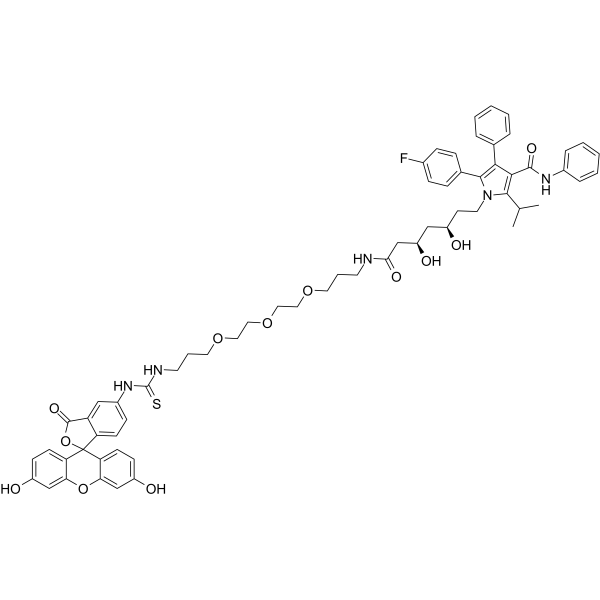
-
- HY-101027A
-
-
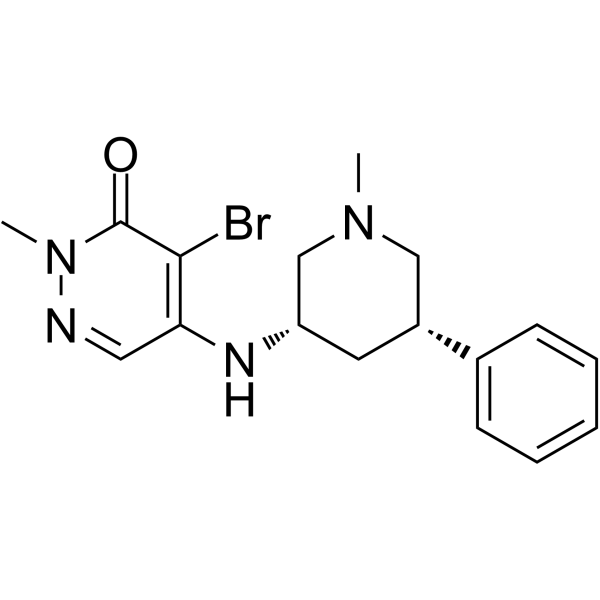
-
- HY-157558
-
|
8SGE
|
Others
|
Others
|
|
KDRLKZ-1 is a KLHDC2 ligand (Kd = 0.36 μM), with IC50s of 0.21 μM and 0.31 μM in alphaLISA and time-resolved fluorescence resonance energy transfer (TR-FRET) displacement assays .
|
-
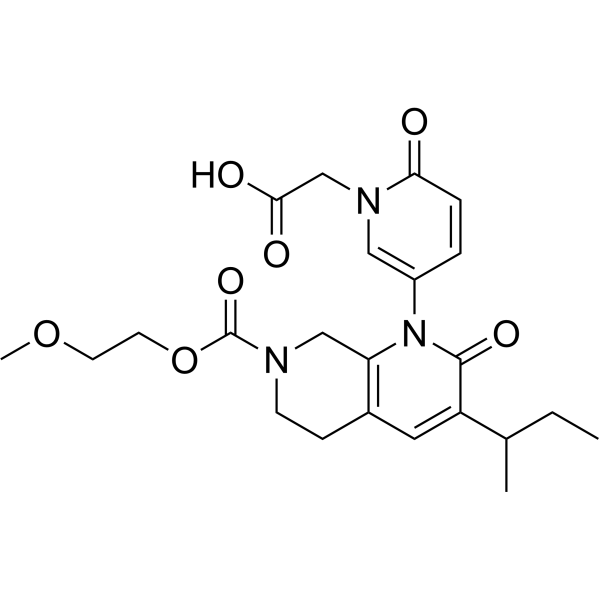
-
- HY-D1333
-
|
|
Fluorescent Dye
|
Others
|
|
DP 630/650 alkyne is a red fluorescent dye with λexcitation of 630 nM and λemission of 650 nM. The terminal alkyne group can be conjugated with various azides by copper catalyzed Click chemistry. BDP 630/650 alkyne can be used for fluorescence polarization assays .
|
-

-
- HY-15941
-
|
Fluorescein 5(6)-isothiocyanate; Fluorescein isothiocyanate 5- and 6- isomers
|
Fluorescent Dye
|
Others
|
|
5(6)-FITC (Fluorescein 5(6)-isothiocyanate) is an amine-reactive derivative of fluorescein dye that has wide-ranging applications as a label for antibodies and other probes, for use in fluorescence microscopy, flow cytometry and immunofluorescence-based assays such as Western blotting and ELISA.
|
-
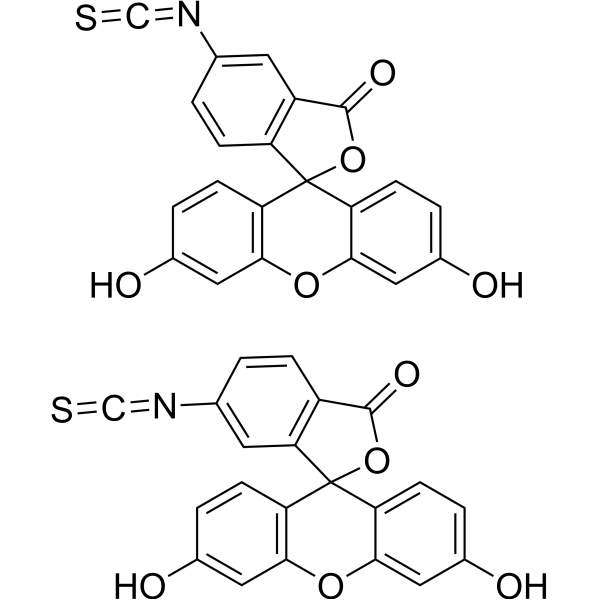
-
- HY-D1657
-
|
|
Fluorescent Dye
|
Others
|
|
BDP 581/591 azide is an azide derivative of BDP 581/591. BDP 581/591 is a universal, photostable fluorophore. BDP 581/591 azide can be used for the conjugation with both small molecules and biomolecules to construct tracers for fluorescence polarization assays and microscopy probes .
|
-

-
- HY-19767A
-
|
|
|
|
|
GSK 3008348 hydrochloride is a small molecule integrin αvβ6 antagonist, extracted from patent WO/2014154725A1, example 1. The affinity (pIC50) for the human - a 6 protein in the Fluorescence Polarisation Assay for GSK 3008348 (hydrochloride) is 8.1, whereas its affinity in the cell Adhesion Assays was for: ανβ6 (pIC50 = 8.4); ανβ3 (pIC50 = 6); ανβ5 (pIC50 = 6.9); ανβ8 (pIC50 = 7.7).
|
-
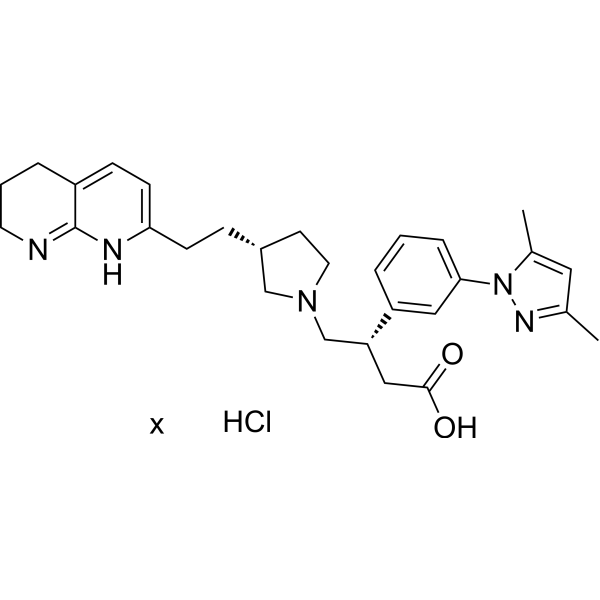
-
- HY-120635
-
|
|
PD-1/PD-L1
|
Inflammation/Immunology
Cancer
|
|
BMS-1001 is an orally active human PD-L1/PD-1 immune checkpoint inhibitor. BMS-1001 exhibits low-toxicity in cells. The IC50 value of BMS-1001 in a homogeneous time-resolved fluorescence (HTRF) binding assay is 2.25 nM .
|
-
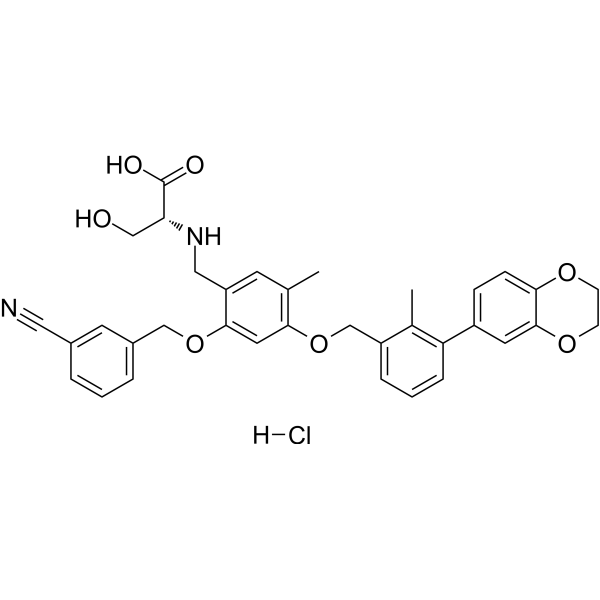
-
- HY-120647
-
|
|
PD-1/PD-L1
|
Inflammation/Immunology
Cancer
|
|
BMS-1001 is an orally active human PD-L1/PD-1 immune checkpoint inhibitor. BMS-1001 exhibits low-toxicity in cells. The IC50 value of BMS-1001 in a homogeneous time-resolved fluorescence (HTRF) binding assay is 2.25 nM .
|
-
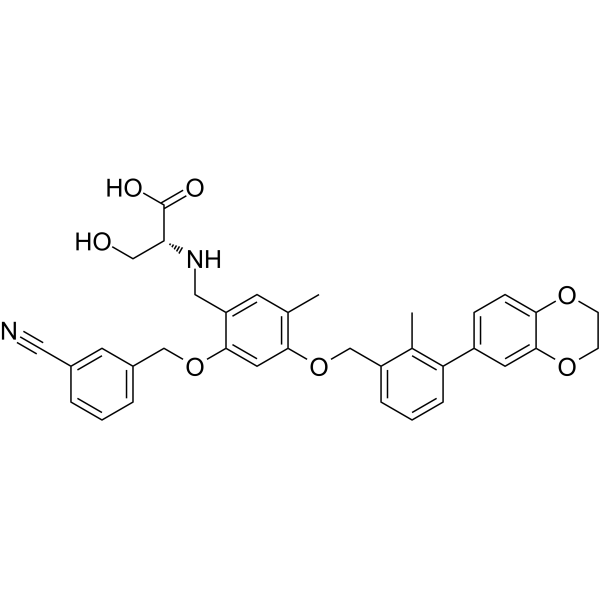
-
- HY-139362
-
|
|
Phosphodiesterase (PDE)
|
Cancer
|
|
Enpp-1-IN-2 (Compound C) is a potent ENPP1 (ectonucleotide pyrophosphatase/phosphodiesterase 1) inhibitor with IC50 values of 0.26, 0.48 and 2.0 μM evaluated by means of TG-mAMP, pNP-TMP, and ATP assays, respectively. TG (Tokyo Green)-mAMP: a newly synthesized sensitive ENPP1 fluorescence probe .
|
-

-
- HY-153231
-
|
|
Fluorescent Dye
Liposome
|
Others
|
|
eGFP mRNA-LNP is a lipid nanoparticle (LNP) containing eGFP mRNA, suitable for assays of RNA delivery, translation efficiency, cell viability, etc. eGFP circRNA carries Enhanced Green Fluorescent Protein (Enhanced Green Fluorescent Protein) eGFP, which will express green fluorescent protein after entering the cell. eGFP is commonly used as a reporter gene detectable by fluorescence microscopy or flow cytometry .
|
-
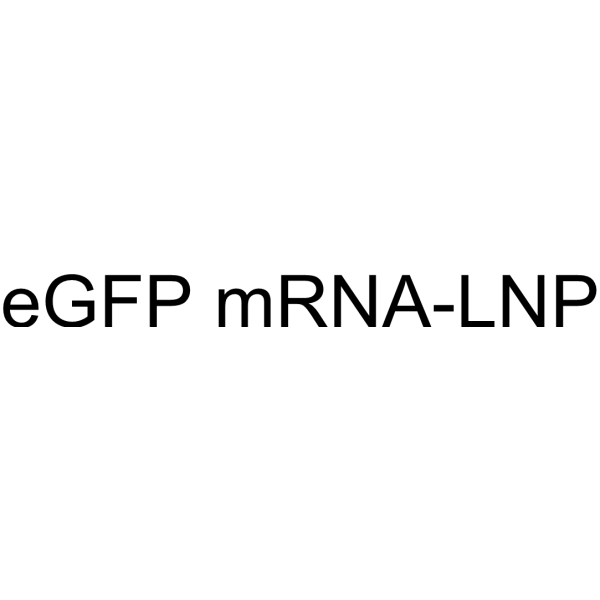
-
- HY-153232
-
|
|
Fluorescent Dye
Liposome
|
Others
|
|
eGFP circRNA-LNP is a lipid nanoparticle (LNP) containing eGFP circRNA, suitable for assays of RNA delivery, translation efficiency, cell viability, etc. eGFP circRNA carries Enhanced Green Fluorescent Protein (Enhanced Green Fluorescent Protein) eGFP, which will express green fluorescent protein after entering the cell. eGFP is commonly used as a reporter gene detectable by fluorescence microscopy or flow cytometry .
|
-
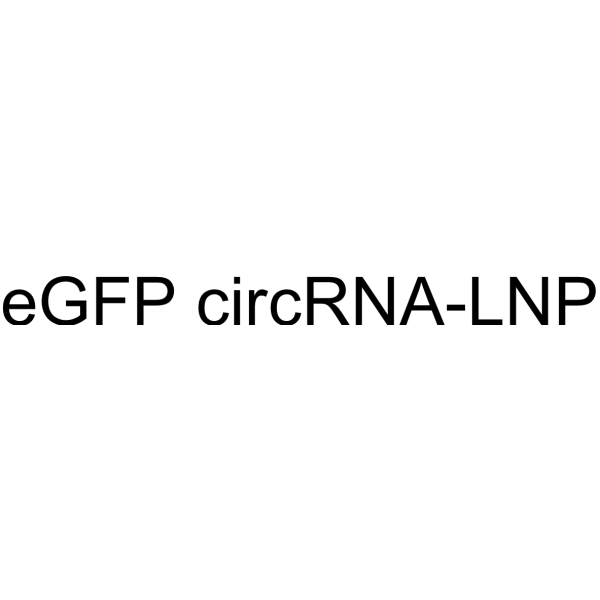
-
- HY-117983
-
|
|
Amyloid-β
|
Neurological Disease
|
|
RU-505 is an effective β-amyloid (Aβ)-fibrinogen interaction inhibitor with IC50s of 5.00 and 2.72 μM in fluorescence polarization (FP) and AlphaLISA assays, respectively. RU-505 is highly permeable to the BBB. RU-505 reduces cerebral amyloid angiopathy (CAA). RU-505 can be used for the research of Alzheimer’s disease (AD) .
|
-
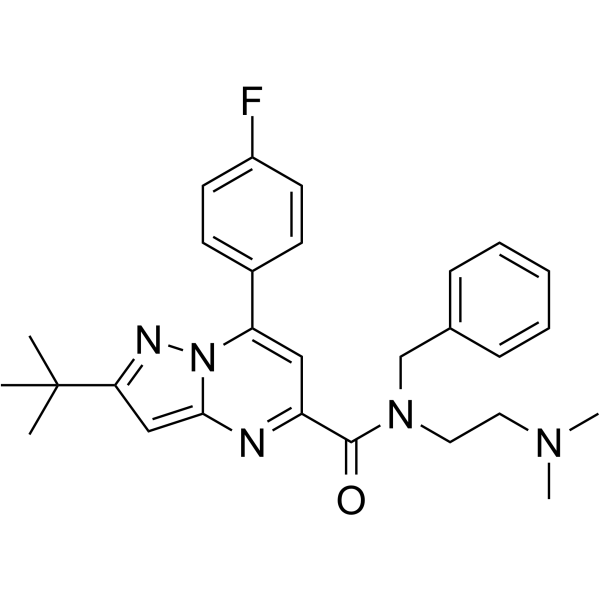
-
- HY-153114
-
|
|
FXR
|
Inflammation/Immunology
|
|
HEC96719 is a selective and orally active tricyclic farnesoid X receptor (FXR) agonist with EC50 values of 1.37 and 1.55 nM by time-resolved fluorescence energy transfer (TR-FRET) and luciferase reporter assays, respectively. HEC96719 significantly improves non-alcoholic steatohepatitis (NASH) and liver fibrosis with favorable tissue distribution in liver and intestine. HEC96719 can be used for the research of non-alcoholic steatohepatitis .
|
-

-
- HY-163385
-
|
|
Others
|
Cancer
|
|
ALKBH1-IN-1 (Compound 13h) is a selective ALKBH1 inhibitor, with an IC50 of 0.026 μM and 1.39 μM in the fluorescence polarization and enzyme activity assay, respectively. ALKBH1-IN-1 can modulate the level of DNA 6mA modifications. ALKBH1-IN-1 can be used to study the functions of ALKBH1 and DNA 6mA .
|
-
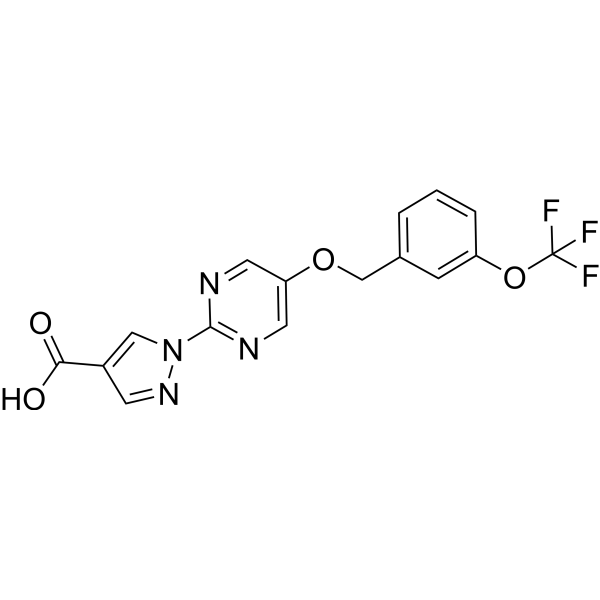
-
- HY-P2185
-
|
|
MMP
|
Others
|
|
NFF-3, the peptide, is a selective MMP substrate. NFF-3 selectively binds to MMP-3 and MMP-10 to be hydrolyzed. NFF-3 is also cleaved by trypsin, hepatocyte growth factor activator, and factor Xa. Label NFF-3 with a CyDye pair, Cy3/Cy5Q, can produce fluorescence in cell assays to detect cell activity .
|
-
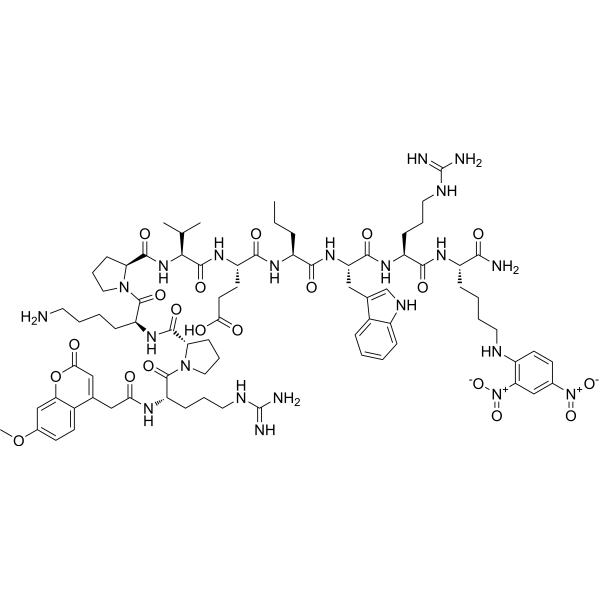
-
- HY-P2185A
-
|
|
MMP
|
Others
|
|
NFF-3 TFA, the peptide, is a selective MMP substrate. NFF-3 TFA selectively binds to MMP-3 and MMP-10 to be hydrolyzed. NFF-3 TFA is also cleaved by trypsin, hepatocyte growth factor activator, and factor Xa. Label NFF-3 TFA with a CyDye pair, Cy3/Cy5Q, can produce fluorescence in cell assays to detect cell activity .
|
-
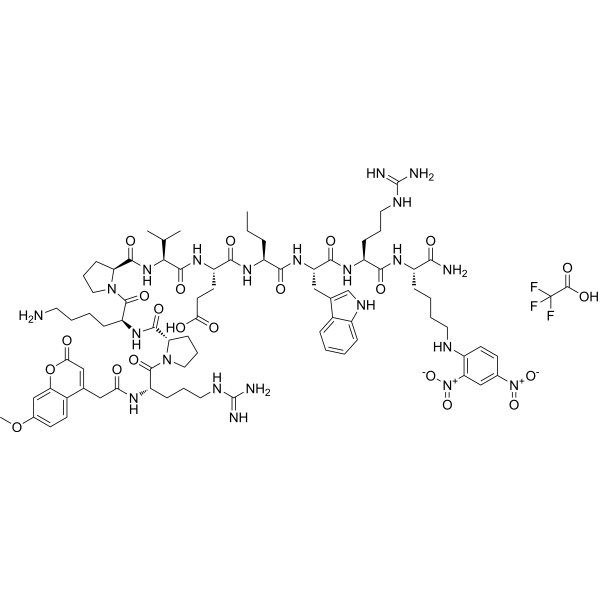
-
- HY-D0952
-
|
|
Parasite
|
Others
|
|
Acridine Orange base is a cell-permeable fluorescent dye that stains organisms (bacteria, parasites, viruses, etc.) bright orange and, when used under appropriate conditions (pH=3.5, Ex=460 nm), distinguishes human cells in green for detection by fluorescence microscopy. Acridine Orange base fluoresces green when bound to dsDNA (Ex=488, Em=520-524) and red when bound to ssDNA (Ex=457, Em=630-644) or ssRNA (Ex=457, Em=630-644), also can be used in cell cycle assays .
|
-

| Cat. No. |
Product Name |
Type |
-
- HY-130433
-
|
|
Dyes
|
|
NBD Sphingosine (NBD-Sph), a fluorochrome, is a fluorescence-labeled sphingosine. NBD Sphingosine can be uesd for fluorescence assay for sphingosine kinases .
|
-
- HY-133705
-
|
|
Fluorescent Dyes/Probes
|
|
Geldanamycin-FITC, a Geldanamycin fluorescent probe, can be used in a fluorescence polarization assay for HSP90 inhibitors. Geldanamycin-FITC also can be used for detection of cell surface HSP90 .
|
-
- HY-D1678
-
|
|
Fluorescent Dyes/Probes
|
|
5(6)-Carboxynaphthofluorescein diacetate is a fluorescent substrate for esterase assays that can be cleaved by intracellular esterases, producing red fluorescence to measure enzyme activity (Ex = 590 nm; Em = 645 nm) .
|
-
- HY-D1654
-
|
|
Fluorescent Dyes/Probes
|
|
BDP 581/591 maleimide is a linker of the BDP 581/591 dye. It has a long fluorescence lifetime and can be used for fluorescence polarization assays. The maleimide group can react with thiol groups to form thioester bonds between pH 6.5 to 7.5, for the labeling of sulfhydryl groups of proteins and peptides.
|
-
- HY-151775
-
|
|
Fluorescent Dyes/Probes
|
|
BDP TR azide is a click chemistry reagent containing an azide group that can react with alkynes, DBCO and BCN. BDP TR azide is also a fluorescent dye that can be used in fluorescence polarization assays and microscopy.
|
-
- HY-D0038
-
|
|
Dyes
|
|
BTBCT is mainly used as a label in time-resolved fluorescence immunoassays (TRFIA). The lower limit of detection for TSH TR-IFMA is 0.011 mIU/L in a 10 μl sample volume. The high fluorescence intensity and stability of BTBCT improves the sensitivity of the assay .
|
-
- HY-15941
-
|
Fluorescein 5(6)-isothiocyanate; Fluorescein isothiocyanate 5- and 6- isomers
|
Fluorescent Dyes/Probes
|
|
5(6)-FITC (Fluorescein 5(6)-isothiocyanate) is an amine-reactive derivative of fluorescein dye that has wide-ranging applications as a label for antibodies and other probes, for use in fluorescence microscopy, flow cytometry and immunofluorescence-based assays such as Western blotting and ELISA.
|
-
- HY-D1657
-
|
|
Fluorescent Dyes/Probes
|
|
BDP 581/591 azide is an azide derivative of BDP 581/591. BDP 581/591 is a universal, photostable fluorophore. BDP 581/591 azide can be used for the conjugation with both small molecules and biomolecules to construct tracers for fluorescence polarization assays and microscopy probes .
|
-
- HY-P2185
-
|
|
Dyes
|
|
NFF-3, the peptide, is a selective MMP substrate. NFF-3 selectively binds to MMP-3 and MMP-10 to be hydrolyzed. NFF-3 is also cleaved by trypsin, hepatocyte growth factor activator, and factor Xa. Label NFF-3 with a CyDye pair, Cy3/Cy5Q, can produce fluorescence in cell assays to detect cell activity .
|
-
- HY-D0952
-
|
|
Fluorescent Dyes/Probes
|
|
Acridine Orange base is a cell-permeable fluorescent dye that stains organisms (bacteria, parasites, viruses, etc.) bright orange and, when used under appropriate conditions (pH=3.5, Ex=460 nm), distinguishes human cells in green for detection by fluorescence microscopy. Acridine Orange base fluoresces green when bound to dsDNA (Ex=488, Em=520-524) and red when bound to ssDNA (Ex=457, Em=630-644) or ssRNA (Ex=457, Em=630-644), also can be used in cell cycle assays .
|
| Cat. No. |
Product Name |
Type |
-
- HY-153231
-
|
|
Drug Delivery
|
|
eGFP mRNA-LNP is a lipid nanoparticle (LNP) containing eGFP mRNA, suitable for assays of RNA delivery, translation efficiency, cell viability, etc. eGFP circRNA carries Enhanced Green Fluorescent Protein (Enhanced Green Fluorescent Protein) eGFP, which will express green fluorescent protein after entering the cell. eGFP is commonly used as a reporter gene detectable by fluorescence microscopy or flow cytometry .
|
-
- HY-153232
-
|
|
Drug Delivery
|
|
eGFP circRNA-LNP is a lipid nanoparticle (LNP) containing eGFP circRNA, suitable for assays of RNA delivery, translation efficiency, cell viability, etc. eGFP circRNA carries Enhanced Green Fluorescent Protein (Enhanced Green Fluorescent Protein) eGFP, which will express green fluorescent protein after entering the cell. eGFP is commonly used as a reporter gene detectable by fluorescence microscopy or flow cytometry .
|
| Cat. No. |
Product Name |
Target |
Research Area |
-
- HY-P2185A
-
|
|
MMP
|
Others
|
|
NFF-3 TFA, the peptide, is a selective MMP substrate. NFF-3 TFA selectively binds to MMP-3 and MMP-10 to be hydrolyzed. NFF-3 TFA is also cleaved by trypsin, hepatocyte growth factor activator, and factor Xa. Label NFF-3 TFA with a CyDye pair, Cy3/Cy5Q, can produce fluorescence in cell assays to detect cell activity .
|
-
- HY-P4725
-
|
|
Peptides
|
Others
|
|
Abz-Thr-Ile-Nle-p-nitro-Phe-Gln-Arg-NH2 is a fluorogenic substrate, that can be used for the fluorescence screening assay .
|
-
- HY-P5908F
-
|
|
Peptides
|
Others
|
|
FAM-DEALA-Hyp-YIPD is a fluorescent HIF-1α peptide, with the Kd of 180-560 nM. FAM-DEALA-Hyp-YIPD can be used to assess VHL binding in Fluorescence Polarization (FP) displacement assay, and evaluate the effect of VHL binding on degradation activity .
|
-
- HY-P2185
-
|
|
MMP
|
Others
|
|
NFF-3, the peptide, is a selective MMP substrate. NFF-3 selectively binds to MMP-3 and MMP-10 to be hydrolyzed. NFF-3 is also cleaved by trypsin, hepatocyte growth factor activator, and factor Xa. Label NFF-3 with a CyDye pair, Cy3/Cy5Q, can produce fluorescence in cell assays to detect cell activity .
|
-
- HY-P5415
-
|
|
Peptides
|
Others
|
|
DABCYL-GABA-Ser-Gln-Asn-Tyr-Pro-Ile-Val-Gln-EDANS is a biological active peptide. (DABCYL-GABA-Ser-Gln-Asn-Tyr-Pro-Ile-Val-Gln-EDANS is also called HIV protease substrate I in some literature. It is widely used for the continuous assay for HIV protease activity. The 11-kD protease (PR) encoded by the human immunodeficiency virus 1 (HIV-1) is essential for the correct processing of viral polyproteins and the maturation of infectious virus, and is therefore a target for the design of selective acquired immunodeficiency syndrome (AIDS) therapeutics. The FRET-based fluorogenic substrate is derived from a natural processing site for HIV-1 PR. Incubation of recombinant HIV-1 PR with the fluorogenic substrate resulted in specific cleavage at the Tyr-Pro bond and a time-dependent increase in fluorescence intensity that is linearly related to the extent of substrate hydrolysis. The fluorescence quantum yields of the HIV-1 PR substrate in the FRET assay increased by 40.0- and 34.4-fold, respectively, per mole of substrate cleaved. Because of its simplicity and precision in the determination of reaction rates required for kinetic analysis, this substrate offers many advantages over the commonly used HPLC or electrophoresis-based assays for peptide substrate hydrolysis by retroviral PRs. Abs/Em = 340nm/490nm.)
|
-
- HY-P5510
-
|
HCV NS3 protease substrate
|
Peptides
|
Others
|
|
Ac-Asp-Glu-Asp(EDANS)-Glu-Glu-Abu-ψ-(COO)Ala-Ser-Lys(DABCYL)-NH2 (HCV NS3 protease substrate) is a biological active peptide. (This peptide is a HCV protease substrate incorporating an ester bond between residues P1 and P1. Due to ready transesterification of the scissile bond to the acyl-enzyme intermediate, this substrate shows very high kcat/Km values, enabling detection of activity with subnanomolar nonstructural protein 3 (NS3 protease) concentrations. It is widely used for the continuous assay of NS3 protease activity. Substrate cleavage is proportional to the enzyme concentration with a detection limit for NS3 between 1 nM and 250 pM. Upon cleavage of this substrate, fluorescence can be monitored at Abs/Em = 355/500 nm.)
|
| Cat. No. |
Product Name |
|
Classification |
-
- HY-151775
-
|
|
|
Labeling and Fluorescence Imaging
Azide
|
|
BDP TR azide is a click chemistry reagent containing an azide group that can react with alkynes, DBCO and BCN. BDP TR azide is also a fluorescent dye that can be used in fluorescence polarization assays and microscopy.
|
Your information is safe with us. * Required Fields.
Inquiry Information
- Product Name:
- Cat. No.:
- Quantity:
- MCE Japan Authorized Agent:





































